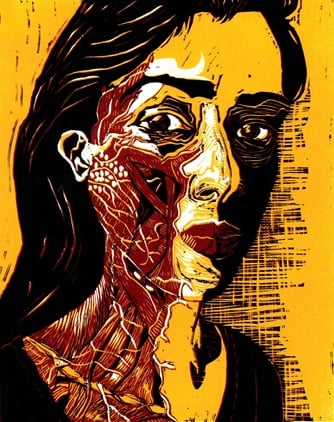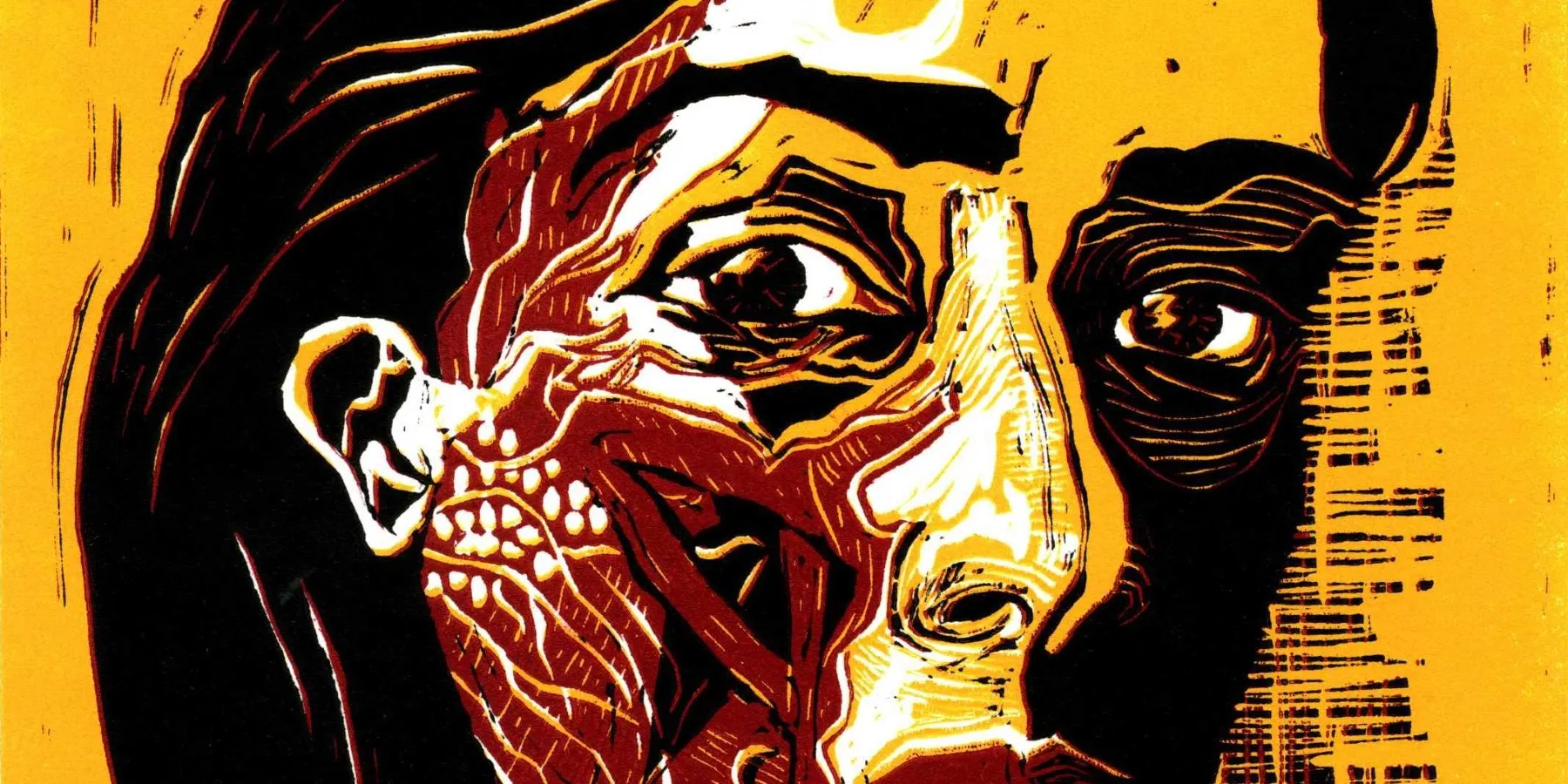Abstract
A reductive linocut is created in progressive stages from a single block. Each color is printed on top of a previous layer, such that each cut is irremediable. This reductive linocut print is of a young woman’s face with one side exposing what lies below her skin. The finality imposed by this medium offers an apt analogy to a medical student’s first human cadaver anatomy dissection.
Figure. Anatomy of a Medical Student

Media
Reductive linocut print.
A reductive linocut is created in progressive stages from a single block. Each layer is carved and color is printed on top of the previous layer. The medium was invented by Pablo Picasso,1 and it is aptly referred to as the “suicide print,” as it is virtually impossible to go back and recover from a mistake. Each cut is decisive, irremediable. When I first held scalpel to skin, I was doing dissection with fellow students, and there was tremendous pressure not to make a mistake. A broader ethical challenge for us medical students would be to pursue dissection while expressing respect for our cadaver’s humanity.
References
-
Haney A. History and Techniques of Printmaking [master’s thesis]. Prescott, AZ: Prescott College; 2015. https://pqdtopen.proquest.com/doc/1694750725.html?FMT=AI. Accessed May 2, 2019.




